Would you like to adopt or own a Havanese type of dog? Well, it’s time for you to know more about this dog breed so that you may know if it fits your personality. By reading on the next discussions, you will explore the nature of this dog, its temperament, the different variety of its coat colors, and many more!
Havanese Dog Nature and Temperament
Many people want to have Havanese dogs breeds at home because they believe that these dog types are suitable to their personalities and preferences. They also believe that they can go along with their friends because of its being sociable. Although these dogs are small, they have a big personality, and they provide affection in bounds and leaps.
Havanese dogs are admired by many people, including their dog parents, because of their long shiny hair, cuddly size, and expressive eyes.
These dogs are bred as companion dogs to the Cuban aristocracy in the 1800s, and they earned their nickname as “Velcro dog” since they stick closely to their owner’s side. These dogs are jolly, loving, intelligent, and loyal to their dog parents. They almost have the good attributes which you may want to find in dogs.
Havanese Dog Colors and Genetics
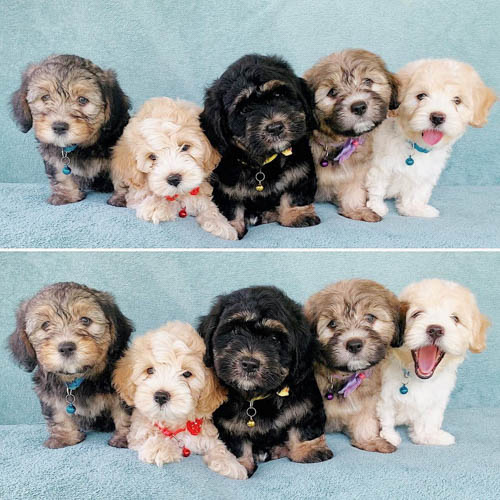
Havanese dogs may come in a variety of coat colors, and these make them unique to any other dog breed. Indeed, its color is one of the interesting differences which make them stand out from other breeds.
Not all types of dogs have a wide range of color patterns and variations like the Havanese. Havanese dogs could be blue, silver, black, brindle, champagne, chocolate, sable, gold, red, cream & white, or even a combination of these different colors.
Because of this huge color variety, it’s quite hard to predict the color of the puppies. Puppies might have various colors or color combinations depending on the appearance of their parents.
However, there are some instances that the color of the puppies’ coats is inherited mostly from one parent since its dominant to them. But in most cases, the combination of both parents’ color is inherited.
There are almost ten different genes that control the color of Havanese dogs. These various genes regulate various parts of its coat color. Some genes make their color pigments, and the other types of genes organize the pigment’s distribution on the dogs’ hair and overall body.
Dogs may have two possible pigments on their coats. The first one is a light pigment called “Phaeomelanin,” and the second one is a dark pigment called “Eumelanin.”
Some genes of these dogs influence dark pigments, and others influence light pigments. There are also some instances that these genes influence both pigments.
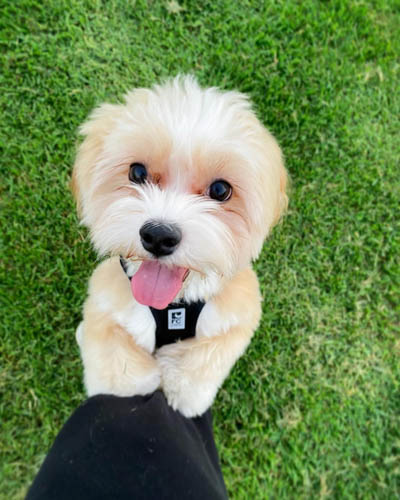
Talking about the genes of Havanese, each of their genes has its denominations, and these are K, T, V, S, M, G, E, D, C, B, and A. If the two genes became dominant, then a dominant one would be expressed.
However, if only one gene tends to be dominant and its other gene is recessive, the recessive will be hidden, and the dominant is expected to appear. A recessive type of gene will only appear if there are 2 of them. The summary of these genes are as follows:
- K gene — Black (dominance)
- T gene — Ticking
- V gene — Silvering
- S gene — White Spotting
- M gene — Merle (marbled)
- G gene — Graying
- E gene — Extension series
- D gene — Dilution series
- C gene — Depth Chinchilla-pigment
- B gene — Chocolate or Black, including eyes and nose
- A gene — Agouti series
By studying the genetics and color appearance of the Havanese dogs, you can expect how your puppy may look like. It’s very interesting to know more about Havanese dogs and their colors since there are many combinations that you could expect from them.
What is the Rarest Color of Havanese Dogs?
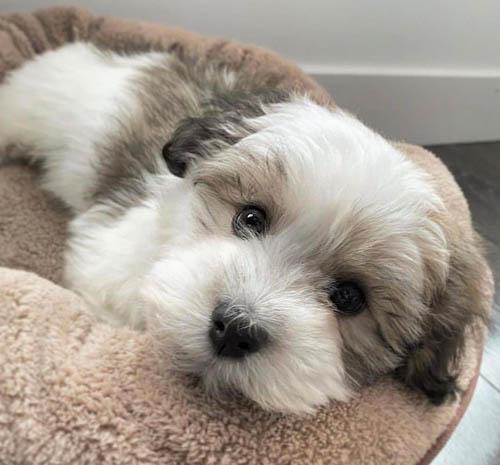
Havanese dogs have various types of colors and may appear different and attractive because of color combinations. But did you know that the rarest color of Havanese dogs is chocolate color?
It is genetically a recessive trait, which means that there are two copies of recessive bb genes which are essential, resulting in a chocolate puppy.
The chocolate color of these dogs refers to changing shades of its patterns and coat colors and the liver/brown colored stained of the lips, paw pads, and nose.
Being recessive doesn’t make a chocolate Havanese dog better than other attractive coat colors of dogs out there. This is just a choice among many possibilities and outcomes on the Havanese offspring.
What is the Best Color for Havanese Dogs?
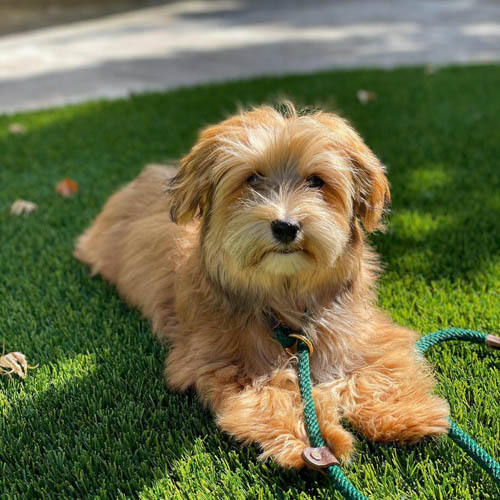
Since Havanese dogs have a wide variety of coat colors, you can have the chance to choose any type of color for your pet. The coat color of your pet depends on your personal choice.
Generally, there’s no such thing as the perfect color for these dogs. It’s because it’s only a matter of your personal choice once you would like to adopt or get one for your household.
For best references, you can pick the best color types of Havanese dogs according to your choice or preference. Some coat colors and types which you may know are the following:
- Cream — This color can be utilized for off-white puppies. This had been previously registered and recognized as champagne. The majority of the puppies display darker cream color on ears.
- Gold — This is a warm color type of modest intensity. A gold Havanese has a light orange or apricot color as well.
- Fawn — This color for the dogs provides cooler tans, brown tones, and buffs.
- Red — It is a type of color for Havanese dogs that have a concentrated reddish-orange. This is another warm type color for these dogs, but this is more concentrated than gold.
- Chocolate — Chocolate Havanese dogs have liver-colored on their lips and nose. Moreover, they have a lighter color on their eyes.
- Silver — Dogs with this kind of color could be like the color of charcoal with a soft pewter silver or light silver. These puppies start turning their coats into silver at early ages, typically after four weeks but surely by twelve weeks.
- Blue — This color is a typical black to light charcoal color. Blue dogs don’t start shifting black coat color to blue until they are at least one year old and older.
- Sable — This is recognized by the black tipping of hairs on its coat, and its base color is gold or fawn. Moreover, the color of its color is determined by looking at the hair roots near its scalp.
- Brindle — This is determined by different patterns of color which run onto the roots. Most brindle dogs have various colors such as black, cream, silver, and gold. Brindles often display black masks.
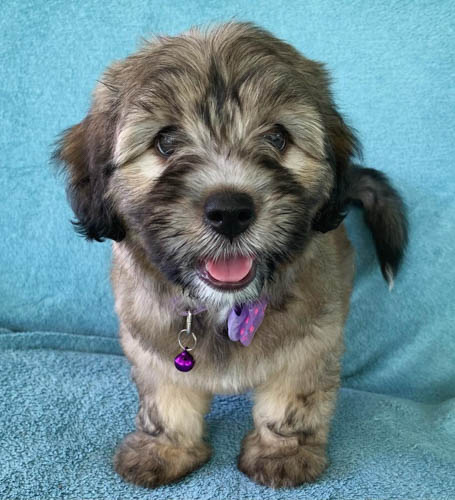
With these available various types and colors of Havanese dogs, you can have the chance to choose specific Havanese dogs based on your choice. Generally, all those color types are ideal for you since they have a unique physical appearance.
What is the Original Color of Havanese Dogs?
There are some arguments that the original color of the Havanese dogs could be white or in different colors. However, the modern Havanese types with various patterns and coats are all acceptable.
All these colored dogs must have black pigment on their eyes and a black-colored nose, excluding the chocolate Havanese dogs. These chocolate dogs may have pigments with dark brown on its nose instead.
What’s the Most Popular Havanese Dogs’ Color?
Almost all color types of Havanese dogs are prominent because of their unique physical appearance. But some people believe that the most popular Havanese dogs’ colors are black and white since these colors are dominant to these dogs.
But as time goes on, the combination of different colors became acceptable and recognized by many people. That’s why they tend to adopt or get Havanese dogs for their household.
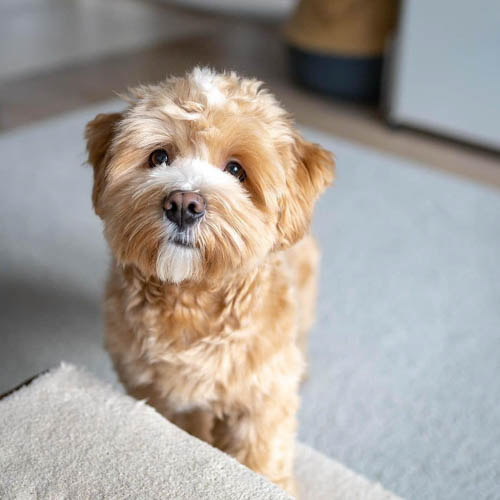
What are the Different Markings in Havanese Dogs?
If you own a Havanese dog breed, then you can see that they have different patterns and markings as they grow old. Some of these markings that you may notice are the following:
1. White markings — These are predominantly colored coats containing small patches on white trim, often found on their chest, chin, and feet.
2. Tan points — This is a detailed layout of light and dark coats. It’s also a largely dark coat that is overlaid with lighter color patterns of points. The most prominent coat colors on its background are black, blue, sable, chocolate, or silver.
These color points are then laid out on different patterns such as lighter markings on eyebrows, muzzle, cheeks, legs, vent, legs, and underside of their ears. The color points of these dogs may be a shade of gold or tan. Moreover, these points can be noticed with the white trim.
3. Cream markings — These are predominantly colored coats containing small patches on cream trim, which can sometimes be found on their chest, chin, and feet.
4. Silver markings — These are predominantly colored coats containing small patches on silver trim, often found on their chest, chin, and feet.
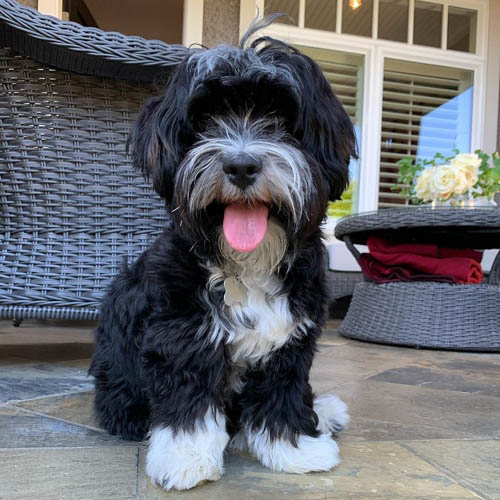
5. Parti Belton — Numerous types of Havanese dogs carry a ticking gene. Those parti-color dogs with ticking genes would have spots of color on their white coat, which provides them a pepper and salt appearance.
Those Havanese dogs without this kind of gene would have white which stays pure and crisp. The ticking would only be on the white part portion of its coat.
6. Silver points — These are predominantly colored coats containing small patches on silver trim, often found on their chest, chin, and feet.
7. Parti-color — With these color markings, the Havanese coat is more than 50% white, containing irregular spots or patches of the second color. The patches of these dogs may be of any type of color.
Different markings can be found and highly recognizable once Havanese dogs started to thrive and age. Any of those markings are visible after a few years.
Things to Know About the Changing Color of Havanese Dogs
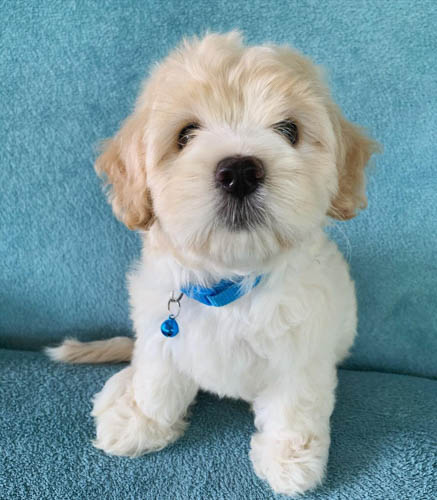
Havanese dogs are interesting breeds that change their coat color as they age and grow up. Most of the time, adult Havanese dogs would have similar colors when they were pups. But there are also some cases that their color dramatically changes after a few months and years.
If you are curious why Havanese dogs change their color over time, it would be better to learn more about their changing colors.
Havanese dogs have over ten genes that control the color of their hair. Some of these genes control their hair pattern, and some of these modifying genes simply control hair colors over time. The dramatic change of the hair color of Havanese depends on the original color of the dogs and its modifying genes’ strength.
Light and White Colored Havanese Dogs Have the Slightest Change of Color
The Havanese’ original color indeed plays an important role in identifying color changes in dogs. Modifying genes typically have the least impact on light or white-colored hair. Another interesting fact about it is that Havanese dogs with white hair coats stay white most of the time.
Sable Havanese Dogs Have Usually Great Color Change
Generally, sable Havanese puppies have hair coats of lighter colors once they grow old and mature. This is what you can expect from your sable Havanese dogs because of the modifying genes.
But there are some instances that the sable parts can be seen on their ears and tails as they turn into adult dogs. In other words, there’s a huge possibility that the sable Havanese pup would look different from its adult self.
Knowing the color-changing patterns and markings of Havanese dogs would provide a great understanding of these dogs. Thus, you can choose a specific color type that would be suitable for your tastes and preferences.